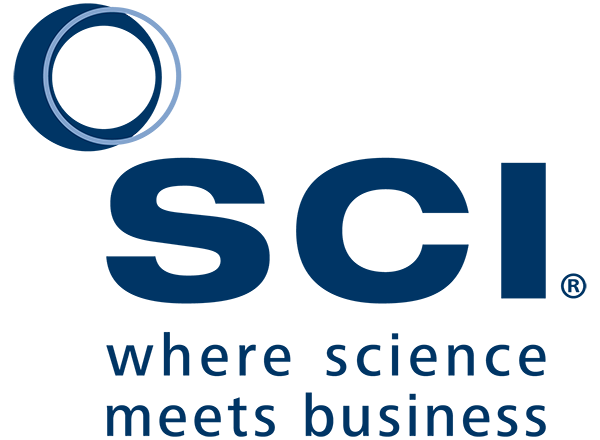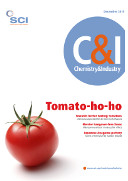If the most commonly used phrase on Christmas Day is ‘Nice jumper, thanks,’ then the Boxing Day favourite must be ‘Never again’ – while nursing a stinging hangover.
So this year, consider that a shot of pear juice – taken in advance – may be just what the doctor ordered.
Researchers at the Commonwealth Scientific and Industrial Research Organisation (CSIRO) in Australia have recently carried out a scoping study of potential hangover cures.
‘Studies have only investigated the Korean (or Asian) pear, which has long been used as a traditional remedy for an alcohol hangover,’ says Manny Noakes, research director of food and nutrition at CSIRO, who led the research. ‘Further studies are needed to confirm whether results could be replicated using other pear varieties.’
One paper cited by CSIRO was a 2013 study from South Korea1, which noted that Asian pears have higher sugar, potassium and water content than Western pears – which in turn have more dietary fibre and carbohydrate. Participants in study were given 220ml of Korean pear juice – or a flavoured placebo – followed by enough alcohol to induce hangover symptoms. Levels of alcohol and acetaldehyde in the blood of those who drank the juice were both reduced, as were some typical hangover symptoms – especially ‘trouble concentrating’.
But the researchers said that genetic factors were also at work – as those with a particular variant of the gene for acetaldehyde dehydrogenase responded better to the pear juice treatment. ‘There may be several ways by which pears could prevent hangovers,’ says Noakes: ‘It appears that Korean pears act on key enzymes involved in alcohol metabolism – alcohol dehydrogenase and aldehyde dehydrogenase.’
Another way to tackle the problem might be to remove the offending chemicals from the product. Just as we now have gluten-free bread, and alcohol-free beer, why not a wine that has been purged of the nasties that cause a hangover? In fact, scientists at the University of Illinois, US, have already engineered a yeast that might allow the production of ‘tailored’ wine or beer – useful for imparting a particular flavour to wine, boosting levels of healthy substances, such as antioxidants, or even banishing the toxic substances that cause hangovers.
Fermented foods, like wine, beer and bread, are made with so-called polyploid strains of yeast, which means they contain multiple copies of genes in the genome. ‘Until now, it’s been very difficult to do genetic engineering in polyploid strains: if you altered a gene in one copy of the genome, an unaltered copy would correct the one that had been changed,’ says Yong-Su Jin, associate professor of microbial genomics at the university, and co-author of a paper in Applied and Environmental Microbiology2.
By using a ‘genome knife’ – an enzyme that cuts across multiple copies of a target gene in the genome – Jin’s group has carried out precise metabolic engineering of Saccharomyces cerevisiae yeast strains used in fermentation.
One substance found in wine, resveratrol, is an antioxidant thought to be beneficial to health.
‘With engineered yeast, we could increase the amount of resveratrol in wine by a factor of ten,’ he says. ‘Or we could put resveratrol-producing pathways into yeast strains used for beer, kefir, cheese, kimchee, or pickles – any food that uses yeast fermentation in its production.’
At the same time, winemakers could enhance malolactic fermentation – a secondary fermentation process that makes wine smooth. Improper malolactic fermentation generates byproducts that may cause hangover symptoms, he says. While the genetic knife will doubtless push back the boundaries of genetic engineering, it will be some time before it delivers what might be the ultimate consumer product – hangover-free wine.
Of course, a Christmas tipple and a Boxing Day hangover are commonplace – and not in themselves a problem. The danger comes when social drinking slowly turns into full-blown alcohol dependence. At this point, the threat of a hangover – and worse – will do nothing to deter the drinker. While the exact mechanism behind alcohol dependence is not well understood, many researchers are targeting the pleasure centres of the brain, and the chemicals associated with them.
Synthetic prevention
Researchers at the University of Wisconsin in the US have synthesised a new set of compounds that could treat alcoholism without the side effects of existing medication. Commercial products, such as Naltrexone and Disulfiram, treat alcohol cravings by targeting opiate receptors in the brain and decrease levels of dopamine – a neurotransmitter that controls the brain’s reward and pleasure centres – so that an alcoholic will derive no pleasure from drinking. However, these drugs – and other treatments, like Valium – can also be addictive, and even cause depression in some patients.
The new compounds – called beta-carbolines – work in a different way according to PhD student VVN Phani Babu Tiruveedhula. Rather than targeting opioid receptors, it targets the GABAA receptors in the brain – which are also implicated in alcohol abuse.
‘Beta-carboline causes no change in brain dopamine levels – unlike existing treatments,’ Tiruveedhula said, speaking at the American Chemical Society meeting in Boston, US, in August 2015. ‘Decreasing dopamine levels can cause anhedonia – a condition that makes you feel miserable.’
Much of the research over the past 20 years was by Tiruveedhula’s supervisor, James Cook. Tiruveedhula’s contribution has been to synthesise the compounds in an efficient two-step, palladium-catalysed reaction with yields of up to 80%3. Earlier synthetic routes involved up to eight reaction steps, with yields as low as 8%.
‘Using this method, we can provide multi-gramme quantities for in vivo studies,’ he says – adding that such a short synthesis route could actually make the drug cheaper than existing treatments.
So far, the compounds have been tested on rats that were trained to crave alcohol, and suppressed their need for it. It also seemed to reduce ‘anxiety’ in these rats – but not in control rats – suggesting that its action is very different to that of opioid antagonists and may be less addictive.
The next step is to try and replicate the results in a primate trial, he says. As a treatment for alcohol dependency, beta-carbolines would be orally administered over time. The rats in the study showed a gradual decline in alcohol craving. However, it will take five or six years before the drug is likely to be commercialised, Tiruveedhula estimates.
Normalising dopamine
Separate research in Sweden also works on the basis that normalising dopamine levels can suppress the desire for alcohol. Two studies by researchers at the Karolinska Institute and Sahlgrenska Academy have shown that a dopamine stabiliser, called OSU6162, helps to reduce alcohol cravings – though the researchers stress that the research is in its early days.
‘The results are promising, but there is a long way to go before we have a marketable drug,’ says Pia Steensland, associate professor in the department of clinical neuroscience at the Karolinska Institute, and co-author of both studies.
Alcohol works on the brain by setting up a vicious circle. It stimulates the production of dopamine, which creates a feeling of well-being. But over time, the reward system in the brain becomes desensitised – meaning that more alcohol is needed in order to raise dopamine levels, leading to addiction.
One of the Swedish studies was a human clinical trial, while the other monitored the response of rats. In the human study4, the researchers examined whether OSU6162 reduces alcohol cravings in those who have a dependency. Half the group of 56 people was treated with the drug, while the others received a placebo. The trial – the first to evaluate OSU6162 as a potential treatment for this condition – administered the drug (or placebo) for a fortnight, after which both groups were tested for their level of alcohol craving. This was assessed through a questionnaire, and then after one drink. Those taking the drug experienced less of a craving for alcohol after having the single drink, said the researchers.
‘The OSU6162 group also did not enjoy the first sip of alcohol as much as the placebo group,’ says Steensland.
In the second study5, rats that had voluntarily drunk alcohol for nearly a year had lower levels of dopamine in their brain reward system than rats that had never drunk alcohol. But when the ‘alcoholic’ rats were treated with OSU6162, the level of dopamine returned to normal.
‘We think OSU6162 can reduce alcohol craving by returning the down-regulated levels of dopamine in the brain reward system to normal,’ says Steensland.
Separate from this study, Sahlgrenska researchers have found that liraglutide – a drug used to treat diabetes and obesity – might also have an effect on suppressing alcohol cravings6. This study, on mice and rats, shows that the drug interferes with the hormone GLP-1. In mice, it prevented alcohol from increasing dopamine levels in the brain, suggesting that the mice got no pleasure from drinking. In a sense, this mechanism is the opposite of the earlier potential treatments: while beta-carboline and OSU6162 normalise dopamine levels – which suppresses the need to drink more alcohol – the liraglutide treatment breaks the link between alcohol consumption and dopamine ‘reward’. The medication also caused rats to decrease their alcohol intake, and prevented ‘relapse’ drinking – a major problem for alcoholics.
‘It reduced the alcohol consumption by 30-40% in rats that drank large quantities of alcohol for several months,’ says Elisabet Jerlhag, a research at Sahlgrenska Academy. ‘Medications that resemble GLP-1 could be used to treat dependency in humans – this will now be studied further.’
These – and other – anti-addiction research projects are done against the background of a growing social problem, say the researchers; it is estimated that around 300,000 Swedish adults – 5% of the population – have an alcohol dependency, which contributes to a cost of SEK45bn ($5.5bn, or £3.6bn). In his paper, Tiruveedhula and his co-authors say that the cost of alcohol misuse to the US government was $224bn (around £150bn) in 2006. An updated figure, from the Centers for Disease Control and Prevention (CDC) in the US, puts this figure at $249bn in 2010.
In the end, perhaps it is better that we don’t find a cure for the hangover: like many forms of pain, it is surely nature’s way of telling us that we’ve had too much – and we should give no solace to those who have self-inflicted.
References
1 Food and Chemical Toxicology: http://dx.doi.org/10.1016/j.fct.2013.04.007
2 Applied and Environmental Microbiology: http://dx.doi.org/10.1128/AEM02310-14
3 Organic & Biomolecular Chemistry: http://dx.doi.org/10.1039/c5ob01572c
4 European Neuropsychopharmacology: http://dx.doi.org/10.1016/j.euroneuro.2015.09.018
5 Addiction Biology: http://dx.doi.org/10.1111/adb.12304
6 Addiction Biology: http://dx.doi.org/10.1111/adb.12295
7 Current Drug Abuse Review: http://dx.doi.org/10.2174/187447370701141117112550#sthash.do5qCJcw.dpuf
Lou Reade is a freelance science writer based in Kent, UK





